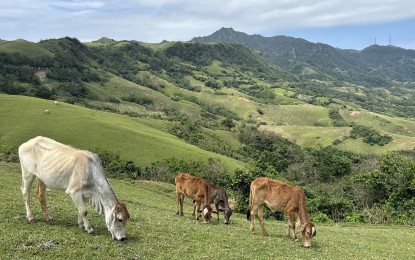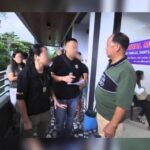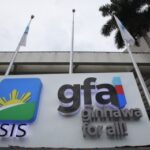MANILA – The current administration recognizes tourism as a vital pillar of the nation’s development, with the sector contributing 8.9 percent to the national economy and providing 6.75 million direct jobs.
In 2024, the country’s Tourism Direct Gross Value Added (TDGVA), an indicator that measures the value added of the tourism industry, rose to PHP2.35 trillion, or 11.2 percent higher than the PHP2.12 trillion recorded in 2023.
Days before the President’s third State of the Nation Address (SONA), the Tourism Secretary underscored a “holistic approach” to tourism development.
“We are guided by a holistic approach to tourism development. One that balances economic opportunity, cultural integrity, and inclusive infrastructure,” she said during a recent speech in Cebu City.
In the past 12 months, strong domestic travel helped sustain the industry despite shortfalls in international arrivals.
Domestic tourism expenditure in 2024 reached PHP3.16 trillion, surpassing the pre-pandemic level of PHP3.14 trillion in 2019.
International tourism expenditures stood at PHP699 billion, up from PHP600 billion pre-pandemic levels, despite the country missing its 2024 arrival targets.
“Our domestic tourism is really strong, and it’s envied across the region,” an industry expert noted in a pre-SONA interview.
The country could build on this success and extend more marketing efforts to attract foreign travelers.
“We need to increase the budget for tourism marketing and promotion. In the private sector, we need to craft better experiences,” the expert added.
Additionally, the country can further improve seamless travel for tourists and liberalize visa policies, especially for key markets like China, which remains one of the world’s largest outbound tourism sources.
In Asia alone, Chinese travelers make up a significant portion of outbound tourism.
“We shouldn’t focus solely on the short term. We need to concentrate on mid- to long-term strategies, such as positioning the right infrastructure in key locations,” the expert emphasized.
Under the current administration, efforts have been made to diversify tourism offerings, including medical and gastronomy tourism, to attract visitors from both key and emerging markets.
The Philippines is eager to tap into the growing Muslim outbound tourism market, projected to reach USD225 billion by 2028.
Last year alone, the country received over 613,000 tourists from Muslim-majority countries, a 24 percent increase from the previous year.
Markets like Malaysia, Indonesia, Saudi Arabia, and the United Arab Emirates are showing strong and sustained growth, affirming the Philippines’ potential as a Muslim-friendly destination.
The government is also ramping up promotions in top markets, including South Korea, to continue attracting visitors.
Beyond developing tourism products, partnerships with stakeholders have been strengthened to improve air connectivity and expand access to the country.
“These are not isolated programs. They are part of a unified effort to ensure that the Philippines is not just beautiful or fun, but authentic, respectful, and competitive on the global stage,” the Tourism Secretary said.
Rakuh a Payaman
Rakuh a Payaman, also known as the Marlboro Hills, is a scenic pastoral landscape located in Batan, Itbayat, in the Philippines’ Batanes province. This vast, open grassland is famous for its rolling hills, grazing livestock, and breathtaking coastal views, offering a serene and picturesque setting. Historically, the area reflects the traditional Ivatan practice of communal land use, where locals collectively manage the land for sustainable agriculture and livestock grazing.
Marlboro Country
“Marlboro Country” is a fictional, idealized landscape created by the Marlboro cigarette brand in its advertising campaigns, starting in the 1950s. It depicted rugged, wide-open spaces—often resembling the American West—with cowboys and scenic wilderness to symbolize freedom, masculinity, and adventure. Though purely a marketing concept, it became an iconic part of American pop culture, despite later controversies over tobacco advertising.
Mahatao
Mahatao is a small, picturesque town located on the northern tip of Batan Island in the Philippines, part of the Batanes province. It is known for its well-preserved traditional Ivatan stone houses and the historic **Mahatao Church (San Carlos Borromeo Church)**, built in 1789, which reflects the Spanish colonial influence in the region. The town offers stunning coastal views, rich cultural heritage, and a glimpse into the resilient Ivatan way of life shaped by the region’s rugged landscape and typhoon-prone climate.
Batanes
Batanes is a remote and picturesque province in the northernmost part of the Philippines, known for its rolling hills, rugged coastlines, and traditional stone houses called *Ivatan*. The islands have a rich cultural heritage shaped by their indigenous Ivatan people and a history of Spanish colonial influence, evident in its old stone churches and fortifications. Today, Batanes is celebrated for its untouched landscapes, unique traditions, and resilient communities adapted to the region’s harsh winds and typhoons.
Batan Island
Batan Island is the largest and most populous island in the Batanes group in the northern Philippines, known for its stunning landscapes, traditional Ivatan stone houses, and rich cultural heritage. Historically, it served as a key trading and defensive outpost during the Spanish colonial era, with remnants of colonial architecture, such as the Basco Lighthouse and the Ivana Church. Today, it is a popular destination for eco-tourism and cultural exploration, offering a glimpse into the unique Ivatan way of life.
MANILA
Manila, the capital of the Philippines, is a vibrant city with a rich history dating back to the 16th century when it was founded by Spanish conquistadors. Known for its historic Intramuros district, a walled city from the colonial era, Manila blends Spanish, American, and Asian influences in its culture, architecture, and traditions. Today, it is a bustling metropolis and a key economic, political, and cultural hub in Southeast Asia.
Cebu City
Cebu City, located in the Philippines, is one of the country’s oldest and most historically significant cities, founded by Spanish explorers in 1565. It is known as the “Queen City of the South” and was the first Spanish settlement in the Philippines, with landmarks like Magellan’s Cross and Fort San Pedro reflecting its colonial past. Today, it is a bustling urban center blending rich history, vibrant culture, and modern development.
State of the Nation Address (SONA)
The **State of the Nation Address (SONA)** is an annual speech delivered by the President of the Philippines to Congress, outlining the government’s achievements, priorities, and legislative agenda. Modeled after the U.S. State of the Union, it is mandated by the 1987 Philippine Constitution and serves as a key platform for transparency and national planning. The event, held at the Batasang Pambansa in Quezon City, is a significant political tradition, often attended by officials, dignitaries, and broadcast nationwide.






